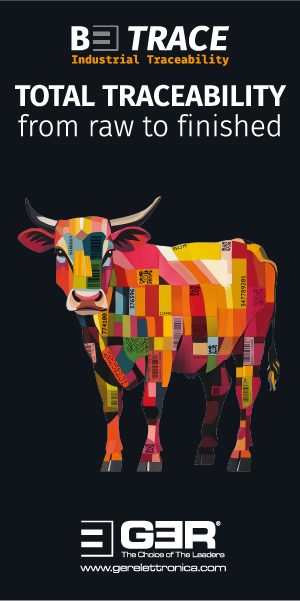Market Intelligence—19.11.24
Macroeconomics
Everyone knows the outcome of the US presidential election now. It was a clear victory for Donald Trump in the end. It seems US voters were guided in their decision by national concerns rather than by questions of global security, free trade or foreign policy. This must be accepted; the decision of the voters is a cornerstone of democracy. The next four years will certainly bring many changes. The convictions of the new-old president and his administration will certainly provoke a lot of reaction, and possibly also conflicts. Much of what is considered important in other regions, especially in Europe, seems to mean relatively little to the new president, and on many crucial issues he also takes diametrically different positions. It remains to be seen what impact this will have on the global economy, trade relations and political relations. One thing is for sure: it will not be easy.
Europe is now taking revenge for the fact that, on the one hand, it was not really prepared for this result and, on the other hand, that Europe does not agree on many issues and has also weakened itself in many sectors in recent years. This does not make the situation any easier economically.
In addition to security policy issues, trade relations will be difficult and for our sector there will be also the different positions on climate policy. Europe may have many good intentions and some goals may also be shared worldwide, but the way in which the problem is dealt with, the time factor and the pathways are extremely different. A good example of this is India praising itself for buying Russian oil. Another is the COP29 conference taking place in Azerbaijan; the chosen location alone represents a certain paradox. Ideology meets pragmatism at the moment, and you have to have the impression that pragmatism is winning. How Europe deals with this question will be very interesting.
The break-up of the German coalition government is more than just a side note; the outcome of the new elections in 2025 will be of considerable importance for future European Union policy. If the general shift to the right is also evident in Germany, then this is likely to have a significant impact on many areas of EU policy.
In addition to politics, the announcements of the Chinese central government to support some highly indebted provinces with $1.4 trillion were a very clear signal of how difficult the current economic situation in China is. In addition, there were announcements of tax cuts for private house purchases to support the still weak real estate market. The reaction of the financial markets in China and overseas has been relatively muted. Given the size of the Chinese government’s support measures, it must be assumed that the less than enthusiastic reaction of the financial markets indicates that problems are so significant that even this extremely large support may still not be enough to put the economy back on a solid growth path.
The financial markets reacted clearly to the election result in the US. Donald Trump is generally considered positive for the stock market and that is how it was interpreted this time. In particular, companies and entrepreneurs who are assumed to be in line for help from his policies have seen significant gains in value. After a few days, the enthusiasm of investors slowly waned and somewhat more realistic valuations set in. From a more rational point of view, it is first necessary to wait and see to what extent the new president can implement his announcements. This is particularly true concerning tariffs and his idea that he will be able to control inflation better than his predecessor.
If you take the US dollar as a reflection of the expectations of interest rate developments, then you have to assume that the markets see the policy as inflationary and the US dollar has therefore risen sharply in value.
The price of gold fell significantly after the election. Likewise, the price of oil continued to go backwards because estimates of oil demand and at the same time Mr Trump’s desire to produce more oil in the US weighed heavily on the price.
One thing can be said in any case after the election: anyone looking for excitement in the financial markets will probably be well entertained in the near future.
Market Intelligence
A question has arisen about the extent to which the changing political situation will have an impact on the leather industry. Of course, ours is only a small sector and does not play a special role in the big world of business. But for our customers, especially in the automotive and luxury goods industries, it looks as though important changes are possible.
If there is a fundamental willingness to give leather space again, where can leather be successfully produced? Possible tariffs on the import of many products into the US could play a major role here. This would probably have the greatest effect on automobiles first. It remains to be seen whether luxury goods such as handbags or other accessories would also be affected. However, this is may not be an issue because, according to his own statements, the new president-elect of the US, Donald Trump, is only interested in relocating production to home soil.
There may be new tariffs not only on European cars, but possibly also on many other imports, especially from China. It is still completely unclear what products might be involved. It might be a nice thought to just sit back or, if necessary, go on a long vacation and wait to see what emerges. But for people who have to run companies, this is not really an option. We have to think about how things will continue in the next few months and what strategies should be chosen for the future. Much will also depend on whether the European Commission will stick to its ‘Green Deal’ strategy. Whatever happens, the leather industry, especially in Europe, will have to deal with the facts and the framework conditions for production, with or without measures such as the European Union Deforestation Regulation.
The fact remains that the quality of industrially manufactured leather has become the same more or less everywhere in the world. Under this condition, the parameters of costs and revenues as well as production conditions must then be analysed in detail. The motives that caused the leather industry to relocate overseas were initially that tanners were following their customers, plus, of course, seeking to benefit from lower wage costs. Then came the considerations of the environmental cost. Today, many other parameters have been added, and here one can only emphasize the relocation of the chemical industry, the problem of recruiting workers and, above all, of course, the various regulatory requirements. Any location advantages that may be left are the rapid availability and more cost-effective provision of high-quality raw materials and regional markets for higher-priced leather.
Politicians do not care that one of our traditional materials is becoming more and more difficult to produce successfully in Europe.
In any case, the total cost and total yields that have to be reckoned with in Europe must be analysed very carefully, from the slaughterhouse door to the finished product. Those who do so may come to quite surprising conclusions.
If you look at the markets at the moment, it is noticeable that many leather manufacturers see their salvation in the production of higher substances. This is not surprising, because in greater thicknesses, plastic simply cannot successfully copy leather. Wherever higher thicknesses and technical requirements are required, plastic substitutes do not work.
Imagine a firefighter or steelworker in plastic shoes. These may only be limited segments, but there are requirements for stability, safety, comfort and durability in many other areas of application too. We still have over 8 billion potential consumers. Perhaps a maximum of 10% of people categorically reject leather as a material. That leaves a potential market of 7.2 billion people. The question is not so much whether, but how and where leather can be successfully produced for the available markets.
The raw material markets, which are the decisive basis for leather production, have hardly moved in recent weeks. There are also many indications that no major changes are likely until the end of 2024. Obviously, no one has any major interest in changing the status quo. Of course, this also means that in whatever way the markets have found an equilibrium. We still dare to doubt whether the physical amount of supply and demand is also in equilibrium, but for some time now the reflex to provoke the equilibrium with price changes has declined sharply. This will certainly not continue to be the case for ever, but it may well take some time before there are large shifts again.
There is also little real news to report from the market for the splits. More and more producers of collagen and gelatine are feeling the pressure to fill their factories and, on the other hand, they see the prices for their finished products crumbling further. It can be assumed that the multinationals that exist in this sector are currently thinking very carefully about how to deal with this situation in various locations. Otherwise, the demand for leather production is still relatively good. Price is still a problem, which means that weeks with more active demand always calm down quickly when higher prices are demanded as a result.
We can save ourselves the trouble of looking at the sheepskin market. Nothing has really changed in the situation there. There are niches and specialties that continue to find their way into the leather sector. We are seeing more leather jackets again this winter season and in fact there are also one or two brands that are offering double-face clothing again. But all this is of such limited volume that it cannot really stimulate the demand for skins. This market has already been destroying a large volume of raw material for some time. What a shame.
In Asia, the relatively early Lunar New Year (January 29) is casting its shadow on raw material deliveries. In Europe, there are only a few weeks left until the Christmas break, and since the order books are not overly full, you do not feel much of the Christmas stress that was so often cited in the past. Occasionally, leather factories report slightly better orders with faster delivery times, which indicates that one or other retailer may have reduced their inventories a little too far. This is good, as it means a small improvement in sales for some businesses for the year that is coming to an end.












